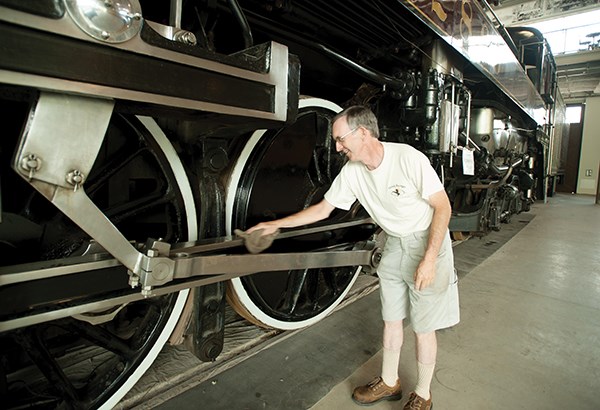Before passenger rail can return to the Sea to Sky Corridor, it could face some challenges beyond winning the support of the politicians in Victoria, according to a local railway historian.
Trevor Mills, the archivist at the West Coast Railway Heritage Park, told The Squamish Chief that there are some obstacles to be addressed, but ultimately there needs to be the will.
“I think what you need… is to have somebody rail-oriented high up in government that wants to make it happen that’ll push it through. I think that’s about the only way you’re going to get it to happen,” he said.
Recently, the Squamish-Lillooet Regional District wrote the provincial government asking for restoration of the region’s passenger rail service, which was cancelled in 2002.
A petition on Change.org also calls for the provincial government to bring back the route between North Vancouver and Prince George.
“It was every day from North Van to Lillooet and three times a week to Prince George,” Mills said.
The provincial government, however, does not think passenger rail is economically feasible. Minister of Transportation and Infrastructure Todd Stone wrote the regional district on May 10 to say the province was not considering passenger service on the route because it was not financial sustainable.
The closure of the rail line was seen a factor in the province’s eventual sale of BC Rail to Canadian National Rail.
“None of the bidders that were interested wanted passenger service,” Mill said.
Beyond the Sea to Sky Corridor, he has heard other communities such as Quesnel and Williams Lake are looking at trying to bring back service.
“There’s so many places up there, up and down the line there, it’s really hard to get in and out of, and having a service like that would be beneficial,” Mills said.
Locally, passenger service arrived shortly after the railway a little over a century ago, although the service only went as far as Quesnel until the 1950s. Later, it was expanded to Prince George.
Squamish was not connected to North Vancouver by road or railway until the 1950s, as visitors had to come by ship before transferring to the train once they arrived if they wanted to head north.
As well, Mills says, there was a second passenger line referred to as the Fisherman’s Special during the 1950s aimed at visitors to fishing lodges at the time, but it only lasted a few years.
One challenge Mills identifies is that most of the passenger lines for BC Rail at the time were subsidized, similar to how public transit is subsidized.
“It wasn’t a for-profit thing,” he said.
Mills adds that the aim was to keep the service operational to help people move around, adding that train services like Via Rail are still subsidized, even with millions of passengers a year.
Another question Mills has is whether the government wants to get drivers off the roads when there is gas tax revenue available.
There is also a question of public access to the former train station in North Vancouver, which has since has been torn down.
“There’s maybe one or two buses a day that go by there,” he said.
The problem, even if the station were rebuilt, is it is not located close to good public transit links, such as at Lonsdale Quay, which undercuts one of the reasons for trains, specifically, to have an alternative to automobiles.
“It’s a big selling point for people wanting to take the train,” he said, “but the railways have no interest in doing it.”
There is also a challenge of who is riding the trains. While the Rocky Mountaineer service that started using the rail line is geared towards tourists rather than regular passengers, the service has become more exclusive over the years.
“It’s a high-end tourist thing,” Mill said.
By the time the summer train service for the North Vancouver-to-Whistler route was cancelled last year, the ticket cost had tripled, Mills says. The price point had created a drop-off in ridership.
Perhaps the biggest challenge to restoring passenger train service would be in getting right-of-way access to the rail lines.
“When BC Rail decided to give up its passenger services, Rocky Mountaineer was on the door knocking,” he said. “And when CN took over, Rocky Mountaineer got exclusive rights to run passenger trains on the old BC Rail line, so I don’t know if that can be challenged.”
As to the ridership numbers, Mills says he is not sure how profitable the line was, as he has never seen numbers from BC Rail.
One consideration he points out, though, is the passenger service was fielding the debt of the Whistler Northwind service, which had not been running long enough to make a profit. He believes the regular daily passenger service was running a profit, but the reason the debt was included was to make the services look less profitable and easier to shut down, and ultimately paving the way for Canadian National to buy in.




